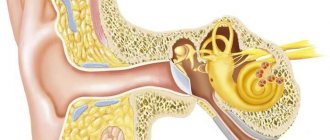- Why are some areas more sensitive to tickling?
- Why can't I tickle myself?
- What is the use of tickling?
- Is tickling dangerous?
- Is it possible to die from tickling?
- Why do people react differently to tickling?
- How to stop tickling
- How to get rid of tickle phobia
Tickling is one of the factors of emotional connection between people. This is an unconditioned reflex that helps to respond to external stimuli. Not all people have a fear of tickling. Some may not respond to tickling. Sensitive people find tickling enjoyable, while others find it irritating.
Tickling can bring both negative and positive emotions
It is divided into two types - knismesis and gargalesis. Knismesis - tickling with a feather or blade of grass. Gargalesis is intense tickling with the fingers. The fear of being tickled by feathers is called pteronophobia.
Why are some areas more sensitive to tickling?
The most vulnerable parts of the body - the feet and armpits - react to tickling. It is there that there are nerve nodes, large blood vessels, and joints. Between the armpits there is the axillary vein and artery.
The neck, chest, and genital area are also sensitive areas. The carotid and vertebral arteries pass through the neck. They supply the brain with blood. The trachea is located in the neck area. Through it, air enters the lungs. Therefore, for these parts of the body, tickling is an irritant and a stimulant.
There are fewer nerve endings in other areas of the body. Therefore, they are less sensitive to tickling.
Tickling can turn into torture
© yacobchuk/Getty Images
There have been cases in history where tickling was used as corporal punishment. There is evidence that the Nazis used tickling as torture. The ancient Romans also used a special type of torture. They tied up the offenders, dipped their feet in salt water and forced the goats to lick it off. Over time, the tickling became very painful.
As for death from tickling, there is evidence that a person can die from laughter, which means it is theoretically possible to some extent.
Why can't I tickle myself?
A person distinguishes between unexpected and expected touches. When he is tickled, a defensive reaction to stimuli appears. This is laughter.
When someone tries to tickle themselves, a signal goes to the brain. A tomography study showed that the cerebellum blocks the reaction. He instantly analyzes the sensations on the fingers, the actions of the hands, and the body.
Additionally, it controls nerve endings. This is how the cerebellum warns the body about possible stimulation of the nervous system. Subsequently, the reaction is suppressed, and the expected sensations do not occur.
Tickling and health: what is considered normal?
All healthy people react to tickling. How exactly they react depends mainly on the characteristics of their nervous system. But if there is no reaction to tickling at all, this is a reason to consult a doctor. MedAboutMe found out who is and who is not afraid of tickling, and what this might mean.
What is tickling?
Actually, tickling means a certain effect on the skin. In this case, a healthy person usually becomes excited, reflexively withdraws the irritated area and giggles or laughs. His facial skin turns red, his breathing becomes irregular, his pulse quickens. The reaction to tickling most often does not cause particularly pleasant sensations, and with prolonged tickling, laughter turns into tears, and excitement turns into hysteria and exhaustion.
Scientists distinguish two types of tickling:
- Knismesis - light touch, “like a feather.” In this case, any part of the body can be sensitive, but erotic zones should be especially highlighted: for most people, this is the inside of the ear, neck, groin area, navel, etc. In this way, a person can tickle himself.
- Gargalesis is a more intense effect on certain areas of the body. In this case, the most “vulnerable” areas are the armpits, ribs, soles, etc. Acute excitement, loud laughter, and involuntary movements are more characteristic of gargalesis. And it is impossible to tickle yourself this way.
Our reaction to tickling is a reflex; we cannot control it. If a person is caught off guard by tickling, the reaction will be stronger. And sad, worried and irritated people, on the contrary, are weaker.
By the way, the more “native” the person who tickles you, the stronger the effect—a stranger cannot achieve this. Also, laughter in response to a joke and laughter in response to tickling - even from a familiar person - will differ.
Tickling in the world of people and animals
We're not the only mammals that are ticklish. Mice, rats, monkeys - this is not a complete list of living creatures that scientists tickled in their laboratories. Children begin to laugh in general from 4 months, and in response to tickling - from about six months.
Why does the human body need tickling?
Why our body needs tickling - scientists cannot yet answer for sure. Although theories were expressed very different.
- Theory about harmful insects.
It was assumed that such a skin reaction makes it possible to quickly detect a threat crawling onto the body. According to this theory, a person gets scared, discovers that there is no snake or insect - and laughs nervously with relief, thus relieving stress.
- Self-defense theory.
Considering that the most ticklish places are the armpits, stomach, and throat, a theory arose that tickling is a defensive reaction, a reflexive attempt to push a stranger away from the most vulnerable places.
- The theory of interrupted crying.
There is an opinion that tickling is a lack of payment. Babies very easily go from laughing to crying when tickled, and, indeed, adults too. And in this case, the reflex response will be laughter - on the verge of tears.
- Game theory.
In experiments on rats, scientists demonstrated that the tickling mechanism is hidden in the somatosensory cortex of the brain and is intended for playful interaction with other individuals.
- Side effect theory.
Finally, it is believed that the tickle response is simply a side effect of the development of our complex central nervous system.
Brain and tickle
A 2013 study found that our brains view tickling as a negative, even painful experience. And this is not surprising. In the brain, the hypothalamus, which is responsible for reacting to external influences, as well as areas of the brain that are associated with the anticipation of pain are responsible for the reaction to tickling.
Diseases and tickling
People can differ from each other in their degree of sensitivity to ticklishness—"tickiness." For some, it is enough to touch, while others, with a smile, will allow themselves to be pricked with fingers in all potentially sensitive places and at the same time will remain relatively calm - for the time being.
It is believed that people with a weak nervous system and sensitive people will react more sharply to tickling. The reaction will also be more acute in those with more sensitive skin.
By the way, especially mentally stable individuals are able to stop their own reaction to tickling. To do this, they need to imagine that it is not someone else, but they are tickling themselves.
But if a person does not react to tickling, this means that something is wrong with his nervous system. It’s not that it’s immediately a disease, but it’s difficult to call such a condition a norm. People with reduced sensitivity to pain, as well as people with some damage to the nervous system, do not squirm from tickling at all - and in this case, the lack of reaction to tickling may be the first symptom of the disease.
The opposite is also true. It is known that you cannot tickle yourself: the brain, in response to tickling, manages to predict the guaranteed safety of the action and does not react at all. But there are people who can tickle themselves. Alas, they are predisposed to schizotypal mental disorders, or low-grade schizophrenia. Such patients suffer from so-called illusions of control. Often they feel that their actions or thoughts do not belong to them, but to some external force.
Some people suffer from increased sensitivity to tickling. British oncologists report that they have developed a method of palpation (examination with fingers) of the lymph nodes and liver in patients with skin cancer. In such patients, touch caused an acute “ticklish” reaction.
The essence of the method is as follows: the doctor places the fingertips of one hand on the skin, over the area being examined. The patient places his fingertips on the doctor's fingers. The doctor places his second hand on top of the patient’s hand and controls it. Thus, the patient's brain believes that he is examining himself with his own hand. In fact, his hand in this “triple sandwich” is controlled by a doctor, and the doctor feels the lymph nodes.
By the way, a healthy person can get rid of tickling in the same way - just put your hands on top of the hands of the one who is tickling.
conclusions
- Tickling does not release endorphins and is not inherently pleasurable. Laughter during tickling is on the verge of tears. Therefore, when using this “method of communication” even in a playful way, you should be very sensitive to your partner. Especially when it comes to children. You should stop irritating actions at the first sign of discomfort.
- It's normal to react to tickling. If it disappears or acquires some new, unusual features, it is better to be examined by a neurologist.
What is the use of tickling?
Psychologists say that tickling is a warning mechanism for the body. It protects - it forces you to pay attention to the object of irritation. They don't always tickle with fingers or a feather. Poisonous insects can be irritants. If they startle, a fear of tickling occurs.
Useful properties of tickling:
- According to psychotherapists, this is part of the highest level of interaction between people. It implies closeness and interest of people to each other. This is one of the forms of communication between a mother and a small child.
- She brings joy. The man laughs and feels pleasure. Laughter is a reflex reaction to stimuli.
- Laughter helps you lose weight. 20 minutes of sincere laughter burns 60 kcal. You can lose 5 kg in a year without dieting.
- Prevention of heart failure. Every day you need to tickle your ears for 10 minutes. Use gentle stimulation. Then the nerve signals decrease. This speeds up the heart's work.
Tickling provides sexual pleasure. This is one of the options for foreplay in sexual relations. In this way you can bring your partner to orgasm. Touches should be gentle and sensual.
Some people enjoy tickling their partner. Others enjoy watching someone get tickled. If a person has knismolagnia (sexual arousal from tickling), such foreplay takes the form of sexual fetishism. Therefore, you need to know when to stop.
Knismolagnia - sexual arousal from tickling
How to overcome your fear of tickling
Having decided to overcome their fear of tickling, people go to psychotherapists. The specialist’s task is to find out the severity of fear, its impact on the psychological and physical state. Therapy is based on simple exercises:
- Switching attention. During tickling, it is important to try to concentrate your attention on any surrounding objects or on your own thoughts that are not related to the irritant. Breathing exercises will be useful to help relieve tension.
- Concentrating your own feelings. You should pay attention to the process itself and to the item that causes inconvenience. It is important to notice any little things, roughness, temperature, size, weight and material. This way the brain receives more information about the stimulus and begins to perceive it normally.
- Change of emotions. If tickling causes hysterical laughter, it should be transformed into aggression. This change in emotion will help relax your nerves and reduce signs of fear.
- Mental transfer to the comfort zone. The most common option is a cinema hall where one of your favorite films is shown. By building a model of a cozy, comfortable place, while drawing the faces of the characters, their movements and speech, anxiety and fear of the stimulus gradually disappears.
- Talking to yourself. Such methods to stop being afraid of tickling may seem funny, but their effectiveness is undeniable. When discomfort occurs, you should begin a dialogue with yourself, asking yourself questions and answering them out loud. Using these tips, you can overcome your fear in just a few days. You need a positive attitude and confidence in a positive outcome of therapy.
If the feeling of tickling or just the thought of it causes panic attacks in the patient, a deeper study of not only the symptoms of the phobia, but also the causes of its occurrence is necessary. The cause of obsessive fear is a situation experienced in childhood, when loved ones tickled the child while playing with him. These patients often require multiple sessions of individual or group therapy, as well as sedatives or tranquilizers.
Is tickling dangerous?
Most scientists talk about the benefits of tickling, but it can be harmful. Previously, it was used as torture on troublemakers: tied to a bed and tickled with bird feathers, straw or dry grass.
There was another method. The criminal's feet were dipped in salt water. After that, the goat licked them. She has a rough tongue. She used it to tickle the person. For the first 5-10 minutes he could enjoy such an action, then he experienced pain. The man was writhing in agony and could die from an excess of emotions and nervous tension.
Is it possible to die from tickling?
Theoretically this is possible. According to scientists, tickling is a passive protective reaction of the body to irritants. Although the person does not experience severe pain, the brain perceives the tickling as a threat. Laughter is not at all an indicator of pleasure or fun. This is a signal that a person wants to get rid of this condition, a reaction to overstrain of the nervous system.
Doctors have found that in the process of tickling a person becomes hyperexcitable. Every light touch causes muscle cramps and spasms. There is a slight fear. The longer the tickling lasts, the stronger the fear will be.
The body tenses to eliminate the stimulus. The tickle victim may suffocate and die. But this only applies to those who have respiratory problems. There are no recorded cases of death from tickling.
Why are some people afraid of tickling and others not?
The strength of the tickle response depends on several factors. Firstly, skin sensitivity. It is different for each of us, and accordingly, the more sensitive a person is, the more strongly he reacts to tickling.
The second factor is predictability. It is because of her that we cannot tickle ourselves. Aristotle was the first to notice this, and modern researchers have confirmed this fact: the cerebellum records the absence of a threat, since the body itself acts as an aggressor and, accordingly, there is no need for a reaction.
Interestingly, people with damage to the cerebellum or schizophrenia, due to suppression of the reaction to their own movements, can feel a similar effect from self-tickling as if they were exposed to it from the outside and begin to laugh.
Another likely reason why some people are ticklish and others are not is genetic predisposition, but there is no research yet to confirm this hypothesis.
How to stop tickling
Place your hand on the hand of the person who is tickling. A signal will go to your brain that you are tickling yourself. And then the sensitivity will decrease and the unpleasant sensations will go away. The main thing is to catch the tickler's hand. This method is often used by pediatricians when examining the abdomen in children.
To stop tickling, you need to catch the tickler's hand.
Is it possible to stop feeling afraid?
There are several methods for eliminating the fear of tickling. Let's look at the main ones.
- Having taken a comfortable position, you need to imagine that the process has begun. If unpleasant sensations and trembling occur, you need to switch to any pleasant thoughts. Repeat at least three times.
- The second way is to ask another person (preferably a close one) to put their hand on the most vulnerable part of the body. It could be the neck or foot. When the first cramps appear, you need to try to relax and concentrate on the feeling of heaviness and warmth of the touching hand. This method must be repeated daily until the touches are perceived calmly. After this, you should ask the same person to begin tickling gradually. If the process causes discomfort, you need to stop, but continue to keep your hand on your body.
Danger of tickling for a child
Many adults consider tickling a child a funny game that gives the baby only positive emotions. In fact, such fun is dangerous, especially at an early age (up to a year). The baby does not yet know how to talk and is not able to say “No!” Meanwhile, infants are very sensitive to any physical contact; only light and soothing touches are permissible towards them.
Touching a baby should only be light and soothing
Even when the baby grows up and begins to talk, during intense tickling he is suppressed by laughter, and impaired breathing prevents him from expressing protest. Parents, and even more so older children, can easily get carried away, putting the baby in a stressful state.
An adult or older child may get carried away by tickling and not notice that the baby is already in a stressful state
After a year, of course, you can sometimes tickle a child. This trains tactile sensations, improves local blood circulation, saturating tissues with oxygen, and tones. The main thing is that such fun should be very short. Parents should clearly feel the line when their child’s joy turns into stress.
When do babies start to feel ticklish?
Children begin to laugh at 3–5 months. We are talking specifically about the loud expression of emotions, since newborns are capable of smiling already in the first weeks after birth. Until 3–4 months, these are simply reflex reactions. If you tickle an infant, he may respond with a smile, but this behavior is not associated with experienced joy. Children begin to feel the source of positive emotions and the difference in tactile influences after 5 months. At this age, they already understand who is tickling them and react with cheerful laughter.
There are children who do not express emotions for a long time. The reason may be the immaturity of the nervous system, but more often the parents are to blame for this behavior. If you have little contact with your baby, rarely smile and are used to holding back your emotions, there is no point in waiting for a response. Change yourself, become an example and use any safe ways to cheer up a small child. It is in such situations that gentle and light tickling can help. Children begin to feel touch and respond to it with laughter.
How does a baby react to tickling after 6 months of life?
Tickling is still being researched in major research centers. Adults often cannot determine the location of touch when their legs are crossed. If adults are touched on both sides of their legs and it happens quickly, they have a lot of trouble figuring out the correct order.
Researchers from the University of London studied how children cope with the experiment. They report their research in the journal Modern Biology.
Psychologists gently tickled the feet of four- and six-month-old babies and observed which of the baby's legs moved.
Six-month-old babies were less able to identify the location of a tickle if their legs were crossed. They showed the same reaction as adults.
Why you shouldn't tickle small children
There is another opinion that tickling has a beneficial effect on the body and heals a number of diseases, for example, arrhythmia and cardiovascular failure, if the place of touch is chosen correctly. Sometimes children themselves ask to be tickled.
Children sometimes like to be tickled
Charles Darwin believed that tickling is tactile contact and learning reactions at the same time. In his opinion, through tickling, relationships are established, especially between parent and child.
And how then can this be correlated with everything previously said? The fact is that in small quantities tickling really has a positive effect on the body and mood. But the line between good and evil is too narrow.
- If a child asks to tickle him, you need to stop exactly at the moment when he begins to dodge and cover himself with his hands, that is, almost immediately.
- Don't tickle children too often, even just a little at a time, unless they ask for it. Touching the body is perceived by the brain as a violation of personal space. And if they are also frequent, then this threat will lead to uncontrollable fear in the future.
Frequent tickling is not good for your baby
- Small children who cannot even say anything should not be tickled at all. This can lead to a complex of all the problems described above. It’s better to wait until the child grows up and ask what pleases him. In this case, the child will develop the mindset of a leader. In the meantime, use other ways to show love, including through tactile contact.
A small child cannot say that tickling is unpleasant to him
Video: what not to do
Is tickling a physical joke?
But why do we laugh when we are tickled? Charles Darwin argued the connection with humor. Common features are a happy mood and a moment of surprise.
Tickling is a kind of physical joke.
Psychologist Christina Harris reviewed this thesis by systematically studying facial expressions during tickling attacks. She found mixed reactions between pleasure and pain. In contrast to Darwin, she could not find any necessary connection between tickling and joyful laughter.
Tickling has been used not only as a game between parents and children or lovers, but also as torture throughout history.
In the Middle Ages, torturers cleaned the feet of victims with salt and tickled them until they confessed to the alleged crime.
Do children under 4 months react differently?
In another experiment, scientists were also surprised: children who were 4 months younger achieved better results. In 70% of cases, they moved the leg that the researchers were tickling—regardless of whether the legs were crossed or not.
Andrew Bremner, co-author of the study, believes that children do not perceive touching their skin as something coming from the outside world. The sense of touch is not yet connected with vision, hearing and smell. Little children don't even look at where they were touched and by whom.
Similar experiments have already been carried out with blind people. People who were blind from birth, like children, showed no difference in the perception of crossed legs. People who lost their vision later could not take the test.










